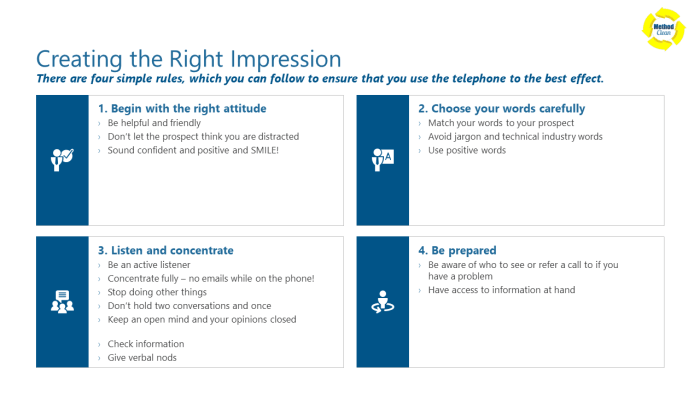
Appointment setting via telemarketing is a pivotal strategy in the realm of sales, combining the art of conversation with the science of persuasion. As businesses strive to connect with potential clients, mastering the nuances of telemarketing can significantly enhance appointment rates and revenue generation.
In this discussion, we’ll explore effective techniques that telemarketers can utilize, delve into the integration of technology that streamlines processes, and highlight how market research shapes successful telemarketing strategies. This guide will equip you with the insights needed to excel in this dynamic field.
Appointment Setting Techniques

Telemarketing for appointment setting requires a blend of strategy, skill, and persistence. Effective telemarketers understand the nuances of communication and the art of persuasion. This process is not merely about selling a service or product; it’s about establishing a relationship that encourages potential clients to engage further. By refining their approach, telemarketers can significantly increase their success rates in securing appointments.An effective telemarketing strategy incorporates various techniques tailored to engage prospects meaningfully.
Understanding the audience is crucial, as it allows telemarketers to personalize their pitch. Additionally, employing active listening skills during calls can help address the prospect’s needs, concerns, and interests directly. This approach fosters trust and rapport, making it more likely for prospects to agree to an appointment.
Best Practices for Telemarketers
Implementing best practices can enhance the effectiveness of telemarketing efforts. Below are key strategies that can lead to successful appointment setting:
- Prepare Thoroughly: Knowledge about the product or service, as well as the target audience, is crucial. Researching leads before calling allows for personalized conversations.
- Build Rapport: Start the conversation with a friendly tone. A genuine connection can make a significant difference in how the call is received.
- Use Clear Value Propositions: Clearly articulate the benefits of the appointment. Focus on what the prospect will gain from the meeting rather than just the features of the service.
- Follow-Up: If the prospect is not ready for an appointment, set a follow-up date. This keeps the door open for future communication and demonstrates persistence.
- Track Progress: Maintain records of calls, outcomes, and follow-ups. This allows for a better understanding of what approaches work and where adjustments are needed.
Overcoming Common Objections
Handling objections effectively is a significant part of the appointment setting process. Telemarketers often encounter resistance when attempting to secure appointments. Recognizing common objections and preparing responses can greatly improve outcomes.
- “I don’t have time”: Acknowledge their busy schedule and suggest brief, focused appointments. Highlight how the meeting can save them time in the long run.
- “I’m not interested”: Engage by asking what specific needs or interests they have. This can provide opportunities to pivot the conversation towards relevant topics.
- “I need to consult with someone else”: Encourage a joint call or offer to provide materials that can be reviewed by others. This shows commitment to their process and respect for their decision-making.
- “We already have a supplier”: Acknowledge their current relationship and inquire about areas for improvement. This can open discussions about how your offering might complement their current solutions.
“Success in telemarketing is not about the number of calls made, but the quality of conversations initiated.”
Adopting these techniques and practices can help telemarketers effectively navigate the complexities of appointment setting, ultimately leading to enhanced engagement and conversion rates.
Integrating Technology in Telemarketing

The integration of technology into telemarketing has revolutionized how businesses engage with potential clients. By employing sophisticated marketing software and CRM tools, companies can streamline their appointment-setting processes, making them more efficient and effective. The combination of human expertise and technological advancements leads to improved customer interactions and higher conversion rates.
Role of Marketing Software in Appointment Setting
Marketing software plays a crucial role in enhancing the appointment-setting process. By automating repetitive tasks and providing valuable insights, these tools enable telemarketers to focus more on building relationships with prospects. Some key functionalities of marketing software include:
- Lead Generation: Automates the collection and organization of leads, ensuring that telemarketers have a ready list of potential clients to reach out to.
- Campaign Management: Facilitates the planning and execution of telemarketing campaigns through scheduling, reminders, and performance tracking features.
- Data Analysis: Offers analytics to assess campaign effectiveness, allowing for data-driven adjustments to improve outcomes.
The use of marketing software ultimately leads to improved efficiency in appointment scheduling, thus increasing the number of successful engagements.
Enhancing Tracking and Follow-up with CRM Tools
CRM tools are essential for enhancing the tracking and follow-up processes in telemarketing campaigns. They offer a centralized platform to manage client relationships and track interactions over time. Key benefits of using CRM tools include:
- Comprehensive Tracking: Allows telemarketers to keep detailed records of each interaction, ensuring personalized follow-ups based on the prospect’s previous engagements.
- Automated Follow-ups: Sets reminders and automates follow-up communications, significantly reducing the risk of missed opportunities.
- Data Consolidation: Integrates various data sources, providing a 360-degree view of client interactions and preferences, which aids in crafting targeted messaging.
These tools not only enhance organization but also improve the overall customer experience, contributing to higher appointment-setting success rates.
Workflow Incorporating Automation in Appointment Scheduling
Designing a workflow that incorporates automation can significantly streamline the appointment-setting process. A well-structured automated workflow minimizes manual intervention, reduces errors, and facilitates smooth operations.An effective automated appointment scheduling workflow typically includes:
- Lead Capture: Collect information from potential clients through forms on websites or landing pages.
- Automatic Qualification: Use pre-defined criteria to qualify leads and prioritize them based on their potential value.
- Appointment Scheduling: Enable prospects to book appointments directly through an integrated calendar system, reducing back-and-forth communication.
- Confirmation and Reminders: Send automated confirmation emails and reminders to prospects prior to their scheduled appointment.
The incorporation of these steps into the appointment-setting process enhances efficiency, ensuring that appointments are set with minimal manual effort while maintaining excellent communication with potential clients.
Market Research and Public Relations
Market research plays a crucial role in shaping effective telemarketing strategies for appointment setting. By understanding consumer preferences, behaviors, and market trends, businesses can tailor their telemarketing efforts to resonate more strongly with their target audience. This informed approach not only enhances engagement but also increases the likelihood of successful appointment setting, ultimately leading to higher conversion rates.Market research informs telemarketing strategies in several ways.
First, it provides insights into the demographics of potential clients, allowing businesses to refine their targeting efforts. Second, it helps identify pain points and needs that the product or service can address, enabling telemarketers to craft messages that speak directly to those concerns. Third, analyzing competitors through market research can reveal best practices and areas for differentiation, equipping telemarketers with the knowledge to present compelling arguments during calls.
Relationship Between Public Relations and Telemarketing Efforts
Public relations (PR) and telemarketing are intertwined in that both aim to build and maintain a positive image of a brand while fostering relationships with potential clients. Effective PR strategies can enhance telemarketing efforts by establishing credibility and trust. When a company successfully manages its public image and maintains positive media coverage, telemarketers benefit from this goodwill during their outreach efforts.The relationship between PR and telemarketing manifests in several key ways.
For instance:
- Brand Awareness: A strong PR campaign can increase brand visibility, making telemarketing efforts more effective as potential clients are already familiar with the brand.
- Message Consistency: Aligning telemarketing messages with PR initiatives ensures consistent communication, reinforcing the brand’s values and mission.
- Reputation Management: Positive PR can mitigate negative perceptions that may arise during telemarketing calls, enhancing the likelihood of favorable responses from prospects.
- Engagement Strategies: PR campaigns often incorporate storytelling, which can be used in telemarketing to create emotional connections with prospects.
Comparison of Traditional Telemarketing and Modern Approaches
The landscape of telemarketing has evolved significantly, influenced by shifts in market trends and technology. Traditional telemarketing often relied on cold calling and generic scripts, with a focus on volume rather than personalization. In contrast, modern telemarketing approaches emphasize targeted outreach, leveraging data-driven insights and digital tools to enhance effectiveness.Key differences between traditional and modern telemarketing methods include:
- Personalization: Modern telemarketing strategies utilize data analytics to personalize pitches, tailoring them to the specific interests and needs of individual prospects, compared to the one-size-fits-all approach of traditional methods.
- Integration with Digital Marketing: Modern telemarketing is often integrated with digital marketing efforts, such as email campaigns and social media, creating a multi-channel approach that increases touchpoints with potential clients.
- Use of Technology: Advanced CRM systems and automation tools enable telemarketers to track interactions, manage leads, and optimize call times, resulting in a more efficient workflow compared to traditional methods.
- Feedback Loop: Modern telemarketing incorporates real-time feedback mechanisms, allowing for rapid adjustments in strategy based on prospect responses, unlike traditional methods that often lack immediate data analysis.
In summary, effective market research informs telemarketing strategies by providing insights into audience demographics and preferences, while strong public relations efforts enhance credibility and engagement. The shift from traditional to modern telemarketing approaches highlights the importance of personalization, technology integration, and data-driven decision-making in today’s competitive landscape.
Ultimate Conclusion
In conclusion, the landscape of appointment setting via telemarketing is continuously evolving, shaped by advancements in technology and changing market dynamics. By implementing the best practices discussed, embracing modern tools, and understanding consumer behavior, you can unlock new opportunities and elevate your telemarketing efforts to new heights.
FAQ Insights
What are the key skills needed for telemarketers?
Telemarketers should possess strong communication skills, active listening abilities, and resilience to handle objections effectively.
How can technology improve appointment setting?
Technology can enhance appointment setting through automated dialing systems, CRM software for tracking leads, and analytics for performance measurement.
What common objections do telemarketers face?
Common objections include budget constraints, lack of interest, and timing issues. Preparing responses to these objections can help overcome them.
Is telemarketing still effective in today’s market?
Yes, when executed properly, telemarketing remains an effective tool for lead generation and appointment setting, particularly when paired with digital strategies.
How can market research enhance telemarketing efforts?
Market research helps identify target demographics, understand consumer preferences, and tailor telemarketing approaches to resonate with potential clients.





